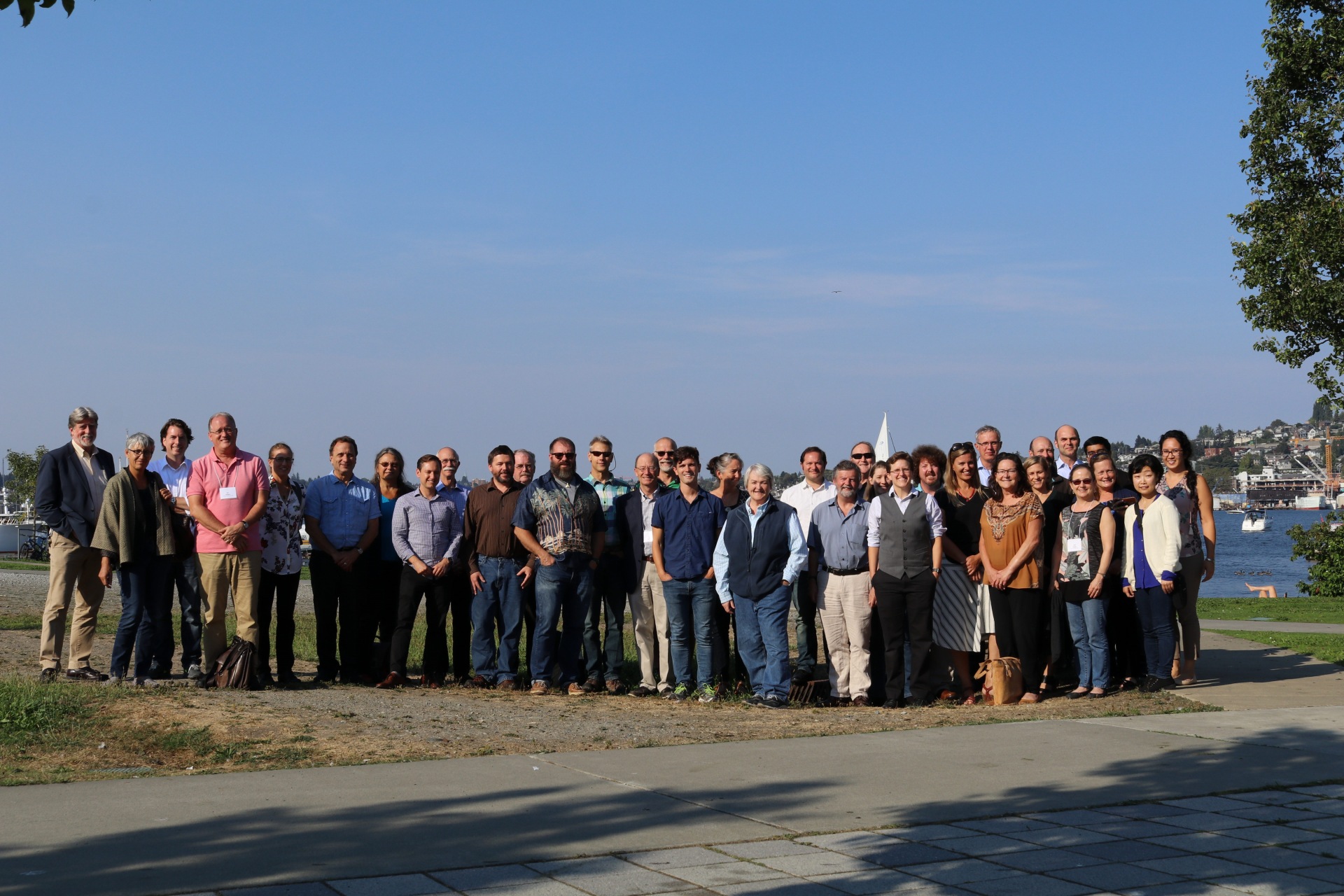Oceanographers from around the world explore deep ocean observing questions in the NE Pacific
Last month, the OOI hosted a workshop in Seattle, WA focusing on exploring research questions in deep ocean observing in the NE Pacific using nearby OOI arrays (Cabled Array, Endurance Array, Station Papa) and other regional observatories.
The interdisciplinary forum brought together researchers with interest or expertise in deep ocean observation, including early career and experienced deep-ocean observing scientists from multiple disciplines, OOI scientists, NSF program managers, the Deep Ocean Observing Strategy (DOOS) Steering Committee, and other local stakeholders. The diversity of participants facilitated discussions of not only fundamental questions about the deep ocean but also how to use observatory data for hazard alerts and resource management strategies.
“It was fascinating to take part in this multi-disciplinary collaboration,” says Andrea McCurdy, Program Manager of DOOS, “to see light-bulbs going on as innovative ideas were shared, and partnerships built. The OOI is an important asset and one that DOOS is primed to take advantage of in this bell-weather area of scientific understanding of our ocean.“
The goal of the workshop was to expand and connect the deep-ocean user community toward developing realistic proposals and hypotheses to carry forward deep ocean observations on the OOI Cabled Array and in the broader NE Pacific. The workshop comprised three main features: informational presentations about NE Pacific assets, DOOS science questions, and EOVs relevant to the deep ocean; lightning talks by the participants about their individual research pursuits; and small working groups.
Much of the workshop was spent in small working groups as participants explored areas of common interest. This breakout group work resulted in framing four topics—operational products, the connection of vents and seeps to ocean processes, cross-shelf exchange, and benthopelagic coupling. More details about these working groups can be found in the workshop report.
“The Deep Ocean workshop was a great opportunity to brainstorm and pitch new ideas in a room full of people who understood both the technical and funding challenges that may arise in any new project,” says Dax Soule, Assistant Professor, Queens College. “I learned a lot and it was an excellent experience.”
The workshop highlighted that within the deep ocean observing community, the OOI can provide a critical resource in helping to ask questions at scales and across disciplines in ways not previously available. Whether near-real-time hypoxia alerts, benthopelagic couple from seafloor to the air-sea interface, across and along shelf transport, and microbes to megafauna connections from the subseafloor through the water column.
“I really enjoyed the opportunity to brainstorm ways that OOI data could be used to answer critical questions related to hydrothermal vent and seafloor seep dynamics,” says Brendan Philip, PhD Student, University of Washington. “Due to the discussions in our breakout group, I’ve begun to view Neptune Canada and the Cabled Array as complimentary platforms that each span the entire footprint of the Juan de Fuca plate. The ability to contrast high and low temperature venting at multiple latitudes is truly exciting and I can’t wait to continue with the collaborations developed during the workshop.”
More information, including the workshop report and presentations can be found here.

